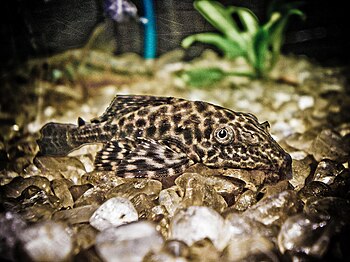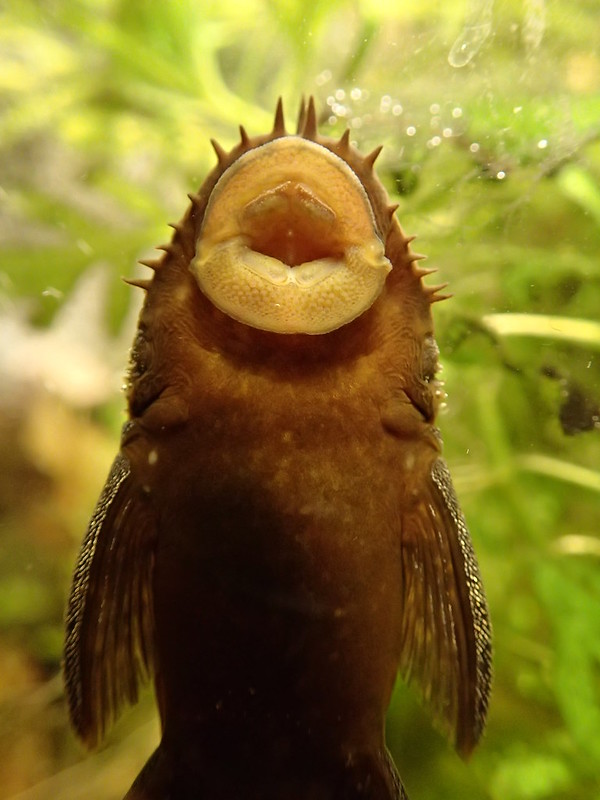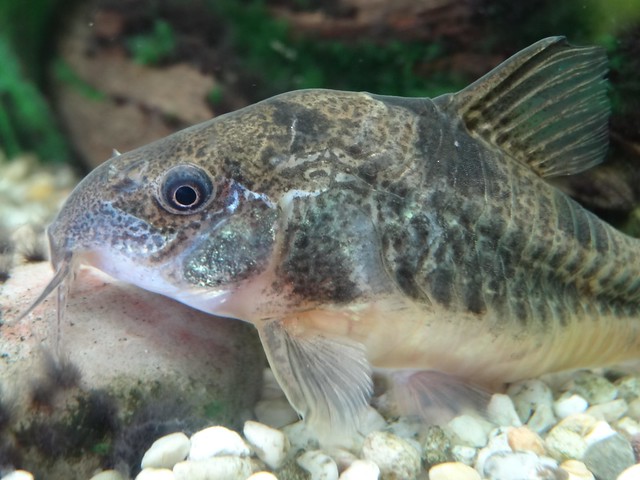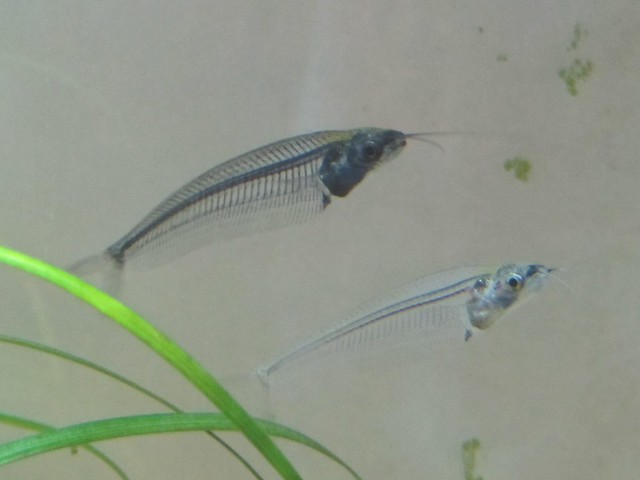This is a list of a lot of Vegetables and some fruit that can be fed to your plecs. Also included are some suggestions for weighing the veg down in the tank.
IMPORTANT
1. Make sure you have an ID of your plec to ensure the correct dietary needs are met.
2. A varied diet of veg+fruit is needed so that nutritional needs are fulfilled.
3. Don't forget to include algae wafers, meat, and wood depending on species of plec.
4. If you put in anything that contains the skin or rind be sure to scrub it first to get rid of any pesticides.
 |
| A Baby Plecostomus (Photo credit: Wikipedia) |
STARTER LIST
This is a list of vegetables and fruit that are popular with most plecs. Zucchini/Courgette Cucumber Peas (deshelled) Sweet Potato Green Beans Melon/Melon rind
OTHER VEGETABLES AND FRUIT
Apple (doesn't seem to be too popular) Asparagus Aubergine/Egg plant Avocado Broccoli/Stalk Butternut Squash+ other squash Capsicum/Bell pepper (not the hot ones) Cauliflower/Stalk Carrot Coconut Grapes Kale/Collard Greens Kiwi Fruit Lettuce Lima Beans Mango Mushroom (common plecs and goldspots love mushroom) let it float,they will reach it. Good exercise. Papaya Potato Pumpkin Spinach Sprouts Swede Tomato Yam
Most veg can be given raw but if you find no-one is interested then try blanching. Don't leave veggies and esp fruit in for too long otherwise you can end up with water quality problems. The easiest approach is to add them in the evening and remove in the morning.
SUGGESTIONS FOR WEIGHING DOWN VEG
Stainless Steel spoon (push the spoon through the veg) Stainless Steel fork (there have been suggestions that plecs have hurt themselves on the prongs of forks, use at your own risk) A rubber band/rock Suction capped Veggie clip (fish shops usually sell these) Screwcumber.
Article Source: EzineArticles |








